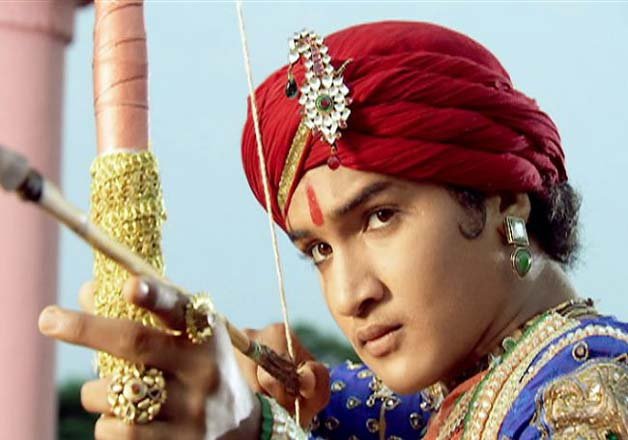
Guha, also referred to as Guhaditya, had eventually wrested power and founded a new kingdom to replace his lost ancestral kingdom. The clansmen were once known as Guhilots, after one of their ancestors, Guha. Sisodia Rajputs of Mewar are Suryavamshi Kshatriyas, from the illustrious line of Raghu and Shri Ram. Mewar was a well-established kingdom by that period, much eulogized for its tradition of valour in battle, and tracing its physical entity in the region to more than one thousand years before Pratap’s birth. His mother, Queen Jayavanta Bai, was the first of his father Rana Udai Singh’s more than twenty wives. Prince Pratap was born in the mighty fort of Kumbhalgarh, straddling the thickly forested hills of the kingdom of Mewar, on 9 th May 1540 (or Jyeshtha Sof the Vikram Samvat calendar). His story is of the powerful, invincible and dauntless spirit for the protection of freedom, sovereignty and dignity of his kingdom and his people. This is one of the many poems and bards sung in respect of Maharana Pratap, a Sisodia Rajput and the 54th Custodian of the kingdom of Mewar. Akbar had never come across in his life time such a true, noble and brave heart warrior of blue blood.

Maharana, always on his feet, well equipped with arms and armour, became a bottleneck for Akbar’s dream of expansion of his empire in the Southern part of Rajasthan.Īt the same, the poet says, for Akbar, the noble king Pratap was also a neckline which is not to be adorned because of his animosity.

The poet beautifully conveys that the august immortal warrior spirit of Maharana Pratap made him daringly stake his life. These poetic lines 1 – from the song entitled “Akbar and Maharana Pratap” (lyrics’ metric style is in Sannaur linguistic pattern of regional Mewari dialect) – praises Maharana Pratap’s war, diplomacy and strategy against Akbar, the Mughal emperor. (j) The erection of Vijaya Stambha and Kirti Stambha in the same fort signifies the closeness between the king and the subjects of Mewar.Dhar Vihar Pratap Khadag Dhar, SujBisar Nah PakkarSaer!Īkbar Uber MaalAadhado, Oeeyeney Sevag Bhup Aaner!! (i) The rulers showed that they cared for their subjects by allowing people from other communities and kingdoms to come and carry out construction work. (h) Amidst aggression and bloodshed, art and literature flourished in Mewar, as it was the land of the brave. (g) According to the writer, the loving and pleasant nature of the people of Mewar is worth admiration. He himself was inclined towards writing and his works are read even today. Literature and art also progressed during his time. (f) Rana Kumba gave new stature to the kingdom through victories and development work. (e) Bappa Rawal is the earliest king of Mewar as mentioned in the passage. (c) the flag of Mewar seemed to be lowered. On the basis of your understanding of the above passage answer each of the questions given below with the help of options that follow : The fact is that both the capitals are standing side by side and reveal the proximity between the king and the subjects of Mewar.

It is useless to indulge in the debate whether the Vijaya Stambha was constructed first or the Kirti Stambha.

In the same fort, Kirti Stambha is standing high, reflecting how liberal the then administration was which allowed people from other communities and kingdoms to come and carry out construction work. Imagine, how glorious the period must have been when the Vijaya Stambha which is the sample of our great ancient architecture even today, was constructed. Amidst aggression and bloodshed, literature and art flourished and creative pursuits of literature and artists did not suffer. Ruins of many structures which are still standing tall in their grandeur are testimony to the fact that Mewar was not only the land of the brave but also a seat of art and culture. 4. One may observe astonishing pieces of workmanship not only in the forts and palaces of Mewar but also in public utility buildings.


 0 kommentar(er)
0 kommentar(er)
